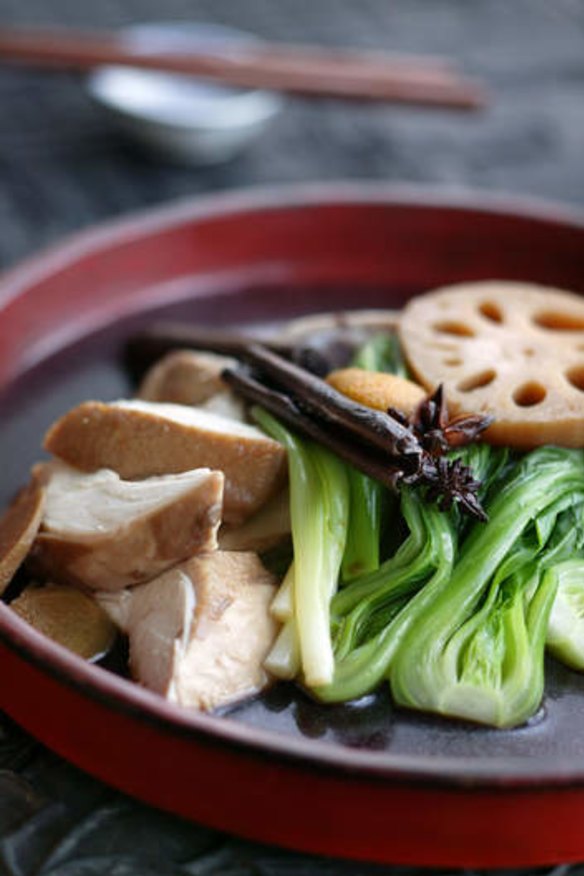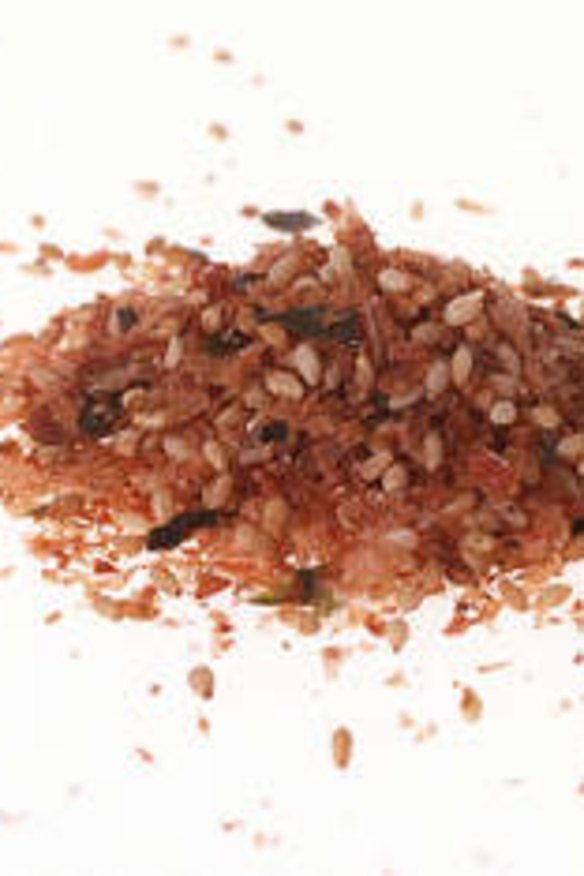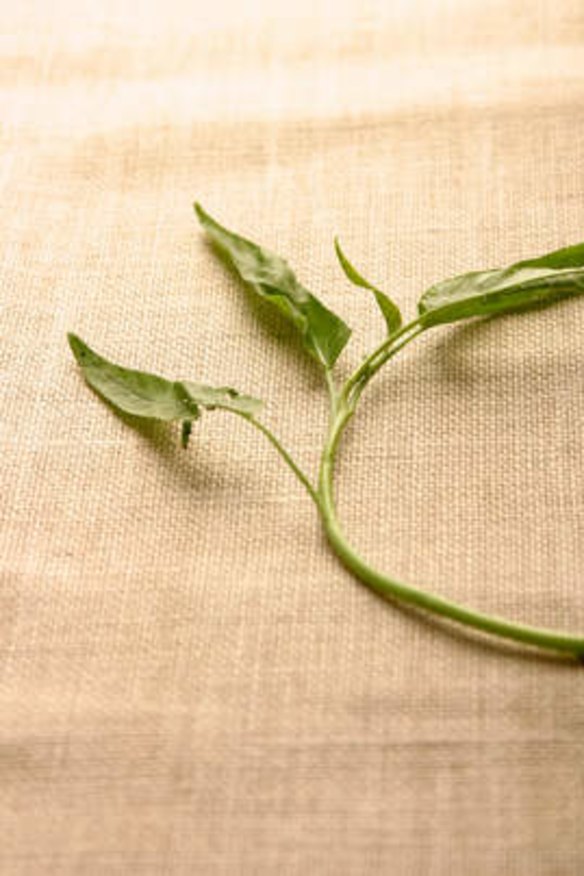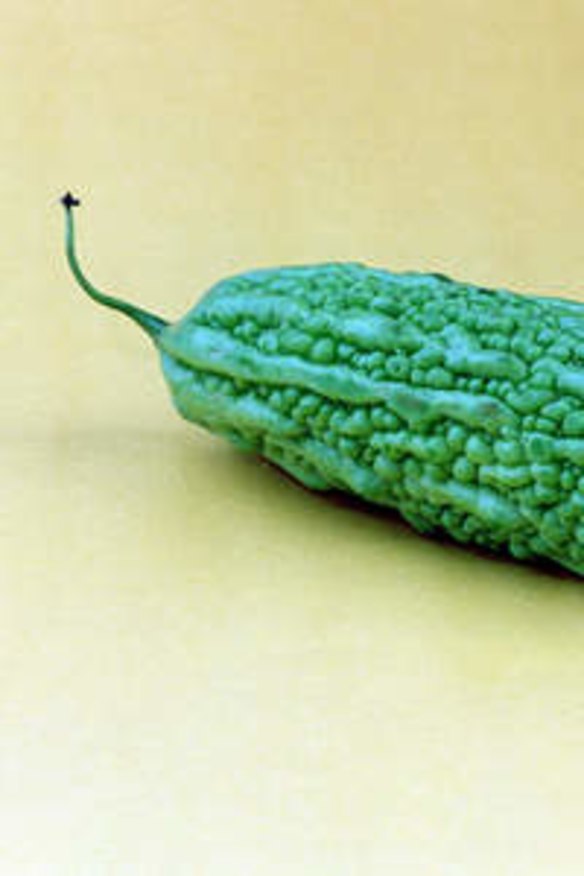Beyond bok choy
Intrigued by the unusual vegie shapes or exotic-looking sauces you've never tried? Now's the time.

These days, Australians are well acquainted with soy sauce, bok choy and curry paste. Take your pantry a step further with this shortlist of lesser-known Asian ingredients.
Doenjang
"It's similar to miso but a lot more potent," says David Ralph, co-owner and chef at Kim restaurant in Potts Point, of this Korean fermented soybean paste. "It goes really well with a lot of proteins."

Nutty and salty, use it in a marinade for meat set for barbecuing or braising, or add it to dips, soups and stews for extra depth of flavour. "You can buy it on Pitt Street, or in Chatswood and Strathfield. Most people know about Korean dishes but not the ingredients themselves."
Bitter melon
"It crosses so many cultures, it's a Thai household staple and there are so many ways to use it," says Palisa Anderson of the Chat Thai restaurant group of this strong-flavoured vegetable. Slice it lengthways like a cucumber, remove the pith and seeds - that's where most of the bitter flavour lives - and use the shell in strips in stir-fries, soups and red curry. "It's delicious. You get used to the bitter flavour, it's like an artichoke that leaves your mouth sweet." The younger the fruit, the less bitter the taste - choose a pale green, firm fruit when visiting the grocer.

Belacan
This dried, fermented shrimp paste forms the basis of many a Malaysian dish, such as spicy sambal sauce and kangkong, a stir-fry made with water spinach.
"We use it in some of our most popular dishes," says the Malaya head chef Mustapa Jaffar. He takes slices from the block of pungent belacan and soaks them in water, blending the mixture with onions, garlic and chilli to make an intense puree.

"Cook that in oil, then put it aside and cook your vegies. Add the paste to the vegies when you're finishing. It's very common in Malaysian cooking."
Cassia bud
Recalling cloves for their brown colour and miniature floret shape, these dried, unopened flowers from the cinnamon tree are often used in southern and central Indian meat dishes cooked on skillets or griddle pans. "It has the flavour of cinnamon, but there's a slight bitterness to it," says Ajoy Joshi, head chef and owner of Indian restaurant Nilgiri's. "It's typical in a Hyderabadi spice mix, which is where I'm from, and is great with red meat." Crush them with black pepper plus fennel seeds or dried chillies to make a dry rub for lamb cutlets.
Lao Gan Ma chilli oil
"We add it to lots of our spicy dishes. We use it when we want that Szechuan flavour," says Dan Hong, executive chef at Chinese fine diner Mr. Wong. Lao Gan Ma, a brand from China that makes a range of chilli-based sauces, can be spotted by its red-capped jars featuring a portrait of the company's founder. This particular condiment offers an intensely flavoured mix of chilli-infused oil, chilli flakes and seeds as well as whole peanuts. "We use it in our kung pao chicken and Szechuan steak tartare, but some people just like to eat it on rice."
Furikake
A blend of the likes of sesame seeds, bonito flakes, ground shiso leaf, dried eggs, nori seaweed strips, sugar and salt, this dry Japanese seasoning adds instant flavour. "It's really good with something plain, and if you have nothing to eat except rice," says Izakaya Fujiyama's chef-owner Kenji Maenaka. "You can sprinkle it on top of rice, or over white fish like blue eye cod or snapper." Buy it readymade or put together your own signature mix.
Dried radish
Also called kiriboshi daikon, these shredded, dried radishes are common in Japanese home cooking. "It's more like a noodle when you soak it," says Kenji Maenaka of reconstituting the dehydrated vegetable in water or dashi stock. "Normally if you braise a radish it would start to break down, but these have a lot of texture." To make a simple, simmered radish dish, stir-fry the radish strips in sesame oil, then braise them with soy sauce and mirin. Add vegetables such as shredded carrots, cabbage or mushrooms.
Lotus root
This crunchy vegetable reveals a snowflake-like pattern of holes when sliced crosswise. "It's crunchy when you boil it, and it absorbs all the flavours of soups and sauces. I use it a lot at home," says Nahji Chu, founder of the family of Miss Chu Vietnamese eateries. "People mainly know of bok choy, pak choy and choy sum, but there are so many other Asian greens." Chu recommends boiling prawn or fish heads in a litre of water with garlic, chilli, palm sugar and fish sauce to make a flavoursome stock. Add four teaspoons of tamarind water, a whole tomato, a few chunks of pineapple and about eight pieces of chopped lotus root.
"It's great. The stalk is very traditional in a hot-and-sour soup."
The best recipes from Australia's leading chefs straight to your inbox.
Sign up